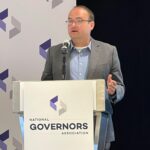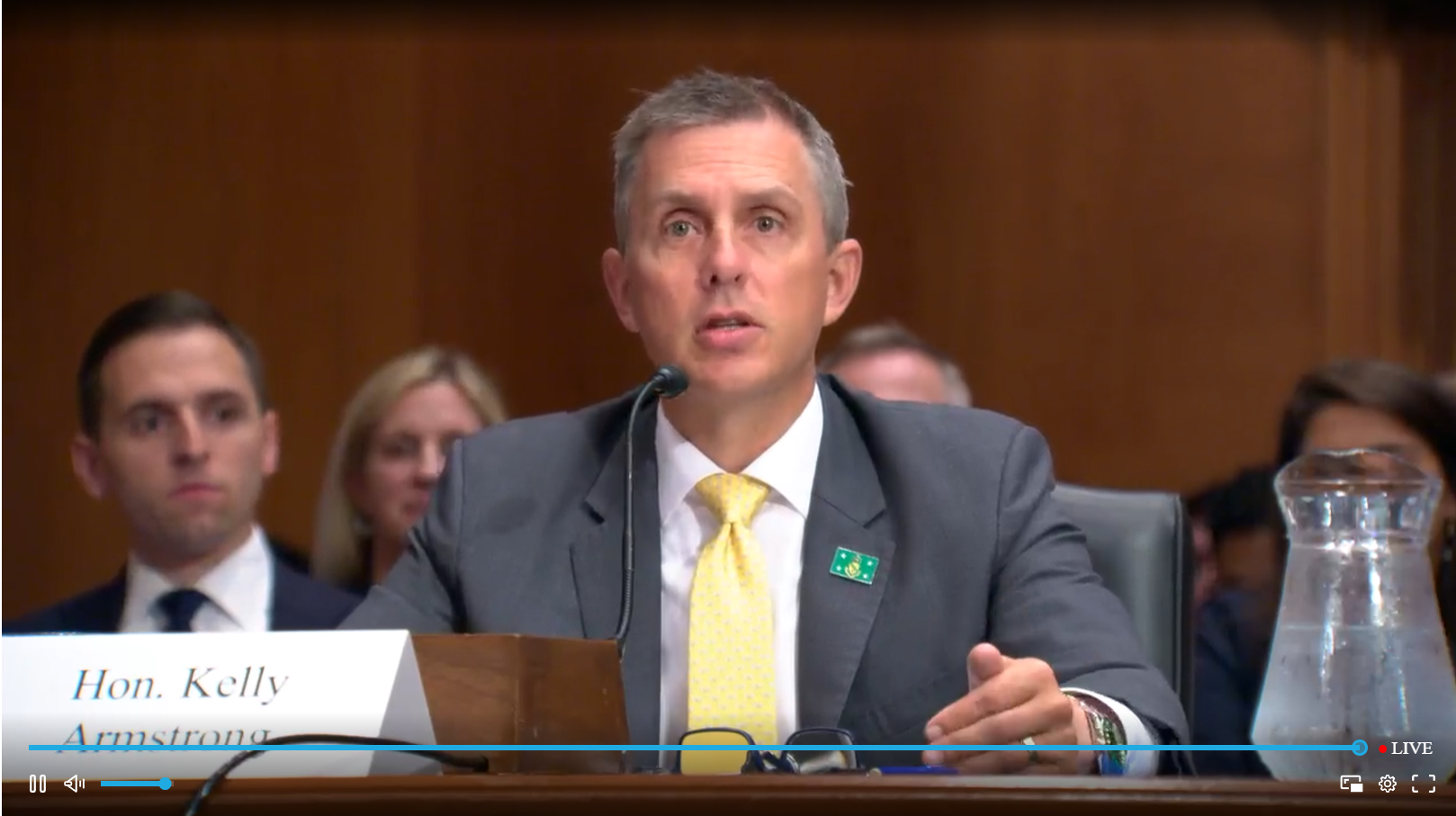The Stimulant and Polysubstance Use Policy Academy provided states and territories with the opportunity to assess their current strategies and infrastructure for stimulant and polysubstance use using a comprehensive approach to address fatal and nonfatal overdoses through policy and programmatic changes.
(Download)
Stimulant and Polysubstance Use Policy Academy Final Report
Introduction
The drug overdose epidemic continues to worsen and has evolved over time. Many states are experiencing a resurgence in use and harms related to stimulants—particularly illicit stimulants—such as cocaine and methamphetamine. Although opioids—mainly synthetic opioids such as illicitly manufactured fentanyls—are currently the main driver of drug overdose crisis, deaths involving psychostimulants, especially methamphetamine, are increasing with and without opioid involvement.
As states and their leaders continue to address the drivers of drug overdose and substance use disorder, many are confronting challenges with illicit stimulant and polysubstance use that present new hurdles—including a lack of medications to treat stimulant use disorder and the complexity of treating polysubstance use disorders. Using the infrastructure and evidence-based strategies employed to address the ongoing opioid overdose crisis may help states pivot to effectively address stimulant and polysubstance use as the overdose epidemic evolves.
The National Governors Association hosted a series of learning calls with national experts, Governors’ office staff and senior officials, researchers, academics, and local organizations to better understand the current landscape and challenges facing state leaders for addressing stimulant and polysubstance use at the state level. These conversations culminated in a roundtable in July 2021, where eight focus areas emerged that Governors and their senior state officials could consider in developing and implementing equitable approaches to reducing stimulant and polysubstance use: effective governance and partnership, funding, prevention, treatment, law enforcement, recovery and support services, data and quality information, and harm reduction.
To build on these efforts and continue to support Governors, NGA launched a yearlong Stimulant and Polysubstance Use Policy Academy from October 2021 through October 2022 with American Samoa, Connecticut, Michigan, and West Virginia. The aim of the policy academy was to help move states and territories away from single drug-driven approaches and reorient them to be more comprehensive and consider polysubstance use within broader policy approaches.
An NGA policy academy is a yearlong opportunity for states and territories to assess their current operating environment, share successes and best practices, learn from experts, exchange ideas with other states and territories, and develop and execute an action plan to achieve program and policy change based on identified jurisdictional goals. This policy academy focused on ensuring state and territorial responses to stimulant and polysubstance use challenges (e.g., strategic plans, health and safety partnership models, funding, policies, programs, practices, etc.) are braided together into a singular, comprehensive approach to overdose and treatment options. NGA worked with core teams that were made up of representatives from the Governors’ offices, alcohol and drug abuse directors, Medicaid directors, senior health and public health agency leadership, state opioid coordinators, state administering agencies, and other policymakers and stakeholders.
Methodology
The NGA Center solicited applications from interested states and territories through a request for applications that was sent out to all state and territorial Governors’ offices. NGA held an informational call with states and territories with interest in the project, and states and territories submitted their applications. States and territories were asked to submit a statement of interest that outlined an overview of their current landscape to improve care for stimulant and polysubstance use, current challenges, and preliminary goals and expected outcomes along with a letter of support from their Governors. An internally developed rubric was used to evaluate the strength of each application based on the required application criteria.
Upon review of applications, the three states and one territory invited to participate in the policy academy were American Samoa, Connecticut, Michigan, and West Virginia. The participating states and territories applied a comprehensive approach to guide their work and focused on the following eight areas of focus:
- Effective Governance & Partnership – strengthening or developing state, local, and/or tribal institution governance structures and fostering partnerships that remove silos and foster collaboration on ideas, data, strategies, operations, implementation, and evaluation under the same mission.
- Prevention – prevention may include both models or programs designed to reduce initiation of stimulants and polysubstance use and policies and programs that promote early intervention and treatment and prevent overdose.
- Harm Reduction – policies and programs designed to minimize the negative health impacts of stimulant and polysubstance use.
- Treatment – medical, behavioral, psychological, and/or sociocultural interventions that manage or mitigate the impacts of polysubstance and stimulant use disorder and functions as a linkage to additional care and support services.
- Recovery & Support Services – non-clinical services that assist individuals and families to services that initiate, stabilize, and maintain long-term recovery from stimulant and polysubstance use and the programs and campaigns used to outreach to and engage with individuals and families.
- Funding – utilizing, securing, allocating, and/or leveraging new and existing local, state, and/or federal funding streams across the care continuum, as well as focus areas.
- Law Enforcement – enhancing training, participating in crisis response, establishing community relationships including care providers, interdiction efforts (e.g., addressing regional and interstate trafficking and using data to target hotspots/dispense secondary prevention efforts), and innovative partnerships with public health to improve care and divert individuals from jail.
- Data & Quality Information – gathering, housing, cleaning, linking, and sharing information necessary for informed decision-making and policy change across state-level agencies and in collaboration and coordination with localities to expand across and improve quality.
State interest in addressing equity regarding race, sex, socioeconomic status, and other populations (e.g., AI/AN, LGBTQIA, rural) was set as a principle embedded throughout these focus areas.
Over the yearlong policy academy, state and territorial participants attended a virtual kick-off meeting with national leaders and subject matter experts in October 2021, developed and implemented a state or territorial action plan, conducted a series of guided assessments, participated in all-state calls and webinars, received customized technical assistance from the NGA Center and experts from the Technical Assistance Collaborative, and attended a wrap-up convening in Los Angeles, California in September 2022 where participants shared outcomes from their action planning and implementation. Teams moved beyond vision statements and preliminary plans to developing and implementing action plans that resulted in significant policy changes or strategies in addressing the eight NGA-identified focus areas. The Technical Assistance Collaborative served as consultant advisors on the project, providing technical assistance and subject matter expertise to the project.
Virtual Kick-Off
The policy academy kicked off on October 6-7, 2021, with a virtual meeting of the state and territory teams and featured perspectives from federal government leadership and evidenced-based research presentations by substance use disorder experts including: Dr. Nora Volkow, Director of the National Institute on Drug Abuse; Regina LaBelle, Acting Director of the Office of National Drug Control Policy; Dr. Christopher M. Jones, Acting Director of the National Center for Injury Prevention and Control at the CDC; and Dr. Miriam E. Delphin-Rittmon, Assistant Secretary for Mental Health and Substance Use at the Substance Abuse and Mental Health Services Administration. The focus of the kick-off meeting provided the latest research and landscape of stimulant and polysubstance use statistics, funding opportunities, partnership strategies, crisis response, equity-focused treatment practices, and fostering interstate peer learning. Prior to the meeting, state and territory project teams were asked to complete pre-meeting worksheets that would inform peer discussion at the kick-off event and their policy academy action plans. The work asked them to complete a self-assessment on ongoing activities taking place in the state or territory, related challenges, and initial goals related to the policy academy.
Action Planning and Technical Assistance
Throughout the project period, states and territorial teams were asked to review, evaluate, amend, and develop relevant comprehensive state plans to address overdose. Building on the initial self-assessments completed prior to the kick-off meeting, project teams developed individualized comprehensive strategic action plans over the course of the project. This included reviewing and evaluating state and territorial agency strategic overdose plans, as well as conducting a thorough review of the policy academy focus areas. As part of the assessment process, NGA reviewed relevant state and territorial agency strategic plans in selected focus areas as well. Alongside project partners, NGA Center staff facilitated and supported jurisdictional assessment efforts over the course of the policy academy.
NGA also provided ongoing technical assistance throughout the policy academy with the support of advisory consultants from the Technical Assistance Collaborative. Such assistance included telephone consultation, facilitated conversations with peer states and experts, memoranda, webinars, assessments, strategic planning discussions, presentations, and other best practices research. In total, more than twenty memos (focusing on topics such as systemic approach alignment, cultural responsiveness considerations, data-driven modeling, etc.), five peer-to-peer discussions, and one white paper on contingency management approaches were produced to support technical assistance needs of the policy academy states and territory. These supports served as the basis for thematic presentations from subject matter experts at the project wrap-up meeting as well.
Project Wrap-up Meeting
On September 19-20, 2022, NGA hosted a Wrap Up Meeting for the Policy Academy on State Strategies to Improve Care for Stimulant and Polysubstance Use in Los Angeles, California. This event convened the three states and one territory that participated in the policy academy to highlight their progress during the project and reflect on the challenges and accomplishments to improving care for stimulant and polysubstance use. The meeting was held in partnership with the CDC and the Technical Assistance Collaborative and brought CDC leaders and subject matter experts together with the project teams to share research and policy processes project teams could draw upon to implement their strategic action plans. Participants had a wide-ranging discussion with peer states and subject matter experts on several key issues, including:
- The Evolving Landscape of Illicit Stimulant and Substance Use
- Lessons in Contingency Management and 1115 Waivers
- Building the Health and Public Safety Partnership
The meeting concluded with a facilitated discussion regarding how to continue the work outside of the project, and a team-to-team discussion where participants asked each other questions about stimulants and polysubstance use programming, funding, and challenges, and shared lessons learned and best practices that could inform their ongoing work and serve as models for further work.
State Goals and Outcomes
As part of this policy academy, each participating jurisdiction developed an action plan, spelling out the goals they hoped to achieve through their participation in this project. Below is a summary of what each state or territory identified as their goals, along with the outcomes they reported achieving at the end of the project.
American Samoa
In 2021, Governor Lemanu Mauga identified the drug epidemic in American Samoa as a top priority for his new administration to build on progress made under previous administrations. American Samoa’s overarching goal for the policy academy centered on a new framework through which all substance use planning and policies would flow to coordinate across agencies and align territorial systems.

Leading into the policy academy, American Samoa identified the following goals:
- Develop a robust governance framework for the coordination of agency silos, with a charge to improve communication among stakeholders and align missions with the framework and legislation.
- Ensure relevant cross-agency information sharing is coordinated, making use of digital tools and technology to inform data-driven decision making, policy recommendations, and promote education and awareness campaigns to reach diverse audiences.
- Conduct a review of available funding streams to more effectively utilize existing funding and increase funding by leveraging or appropriating territory dollars and securing private funds.
American Samoa achieved the following outcomes from their participation in the policy academy:
- Creating and establishing the Comprehensive Substance Abuse Council (CSAC) through Executive Order 003-2022 to provide a comprehensive approach to substance abuse issues.
- Developing clear goals and steps to achieve sustainable implementation of the CSAC and related work to find further solutions and approaches to address issues related to substance use and guide the work of the CSAC committees, while leveraging the staff and progress through the policy academy.
- Consolidation of the Department of Human and Social Services Behavioral Services and the Department of Health into the Territorial Behavioral Health Services to improve efficiency of substance abuse programs and reduce stigma related to the treatment of substance use disorders.
- American Samoa joined the NGA Healthcare Workforce Network to continue their work toward bolstering their behavioral health workforce recruitment and retention strategies.
Connecticut
From 2015 to 2019, Connecticut experienced a dramatic increase in overdose deaths involving a variety of substances, including cocaine, amphetamine, and methamphetamine. As a result of these trends, Connecticut applied to the Stimulant Policy Academy to identify existing service gaps and encourage the implementation of harm reduction programs throughout the state.

Leading into the policy academy, Connecticut identified the following as their goals:
- Develop and integrate a robust framework for harm reduction practices across stakeholders, including revising policies and expanding and creating programs.
- Develop a cohesive framework for diversion and deflection programs in partnership with state and local law enforcement.
- Offer an array of evidence-based treatment options for individuals with stimulant and/or polysubstance use.
The state reported achieving the following outcomes from their participation in the policy academy:
- Increased collaboration between state agencies and offices, including the Office of Policy and Management, the Department of Mental Health and Addiction Services, the Department of Social Services, the Department of Public Health, and the Department of Emergency Services and Public Protection.
- Improved harm reduction education through a statewide conference and worked with the legislature to provide information on fentanyl test strips to assist with harm reduction practices.
- Furthered understanding of treatment options that could be available statewide, including contingency management.
- Developed a framework for sustainability and a plan to leverage the existing Alcohol and Drug Policy Council.
Michigan
Michigan applied for the Stimulant Policy Academy due to the recent increase in stimulant and polysubstance use reported throughout the state. Although Michigan had seen some decline in overdose deaths in 2018 and 2019, the unknown qualities of polysubstance drug use created new public health challenges and threatened to undo this progress. Michigan was also very interested in working and building relationships with tribal governments to help bolster data sharing.

Leading into the policy academy, Michigan identified the following as their goals:
- Create a more coordinated and collaborative system to address emerging trends in overdose through data and to inform response efforts.
- Increase expertise in the public behavioral health system to prevent and treat stimulant use disorder and create a comprehensive, equitable and consistent substance use disorder infrastructure with a focus on the social determinants of health and a recognition of racial disparities.
- Leverage public funding to address substance use disorder network shortages to ensure access to the full spectrum of substance use disorder services for different populations across the state.
The state reported achieving the following outcomes from their participation in the policy academy:
- Created the dashboard for Drug Monitoring Initiative (DMI).
- Developed the Substance Use Vulnerability Index, a new decision-making tool created by the Michigan Overdose Data to Action team that aggregates data on substance use burden, substance use resources, and social vulnerability at the county level.
- Launched the Michigan Opioids Task Force Racial Equity Workgroup and created the Racial Equity Workgroup Design document.
- Created a plan to implement a contingency management pilot through Medicaid to leverage state opioid settlement funding.
- Will establish a tribal workgroup to define traditional healing practices and services for inclusion in a State Plan Amendment to be submitted to the Centers for Medicare and Medicaid Services for possible Medicaid reimbursement. Ongoing internal and external work with Tribal governments to improve data quality, collection and sharing practices will continue.
West Virginia
In 2020, West Virginia had the highest overdose mortality rate in the country, along with significant spikes in methamphetamine-related overdose deaths. In response to this data, West Virginia applied to participate in the Stimulant Policy Academy to help reverse this trend and build its capacity to treat substance use disorders through contingency management and community reinforcement.

Leading into the policy academy, West Virginia identified the following as their goals:
- Develop a coordinated, culturally appropriate educational campaign around stimulant and polysubstance use with a focus on high-risk individuals.
- Reduce the stigma associated with contingency management and identify non-monetary contingency management incentives.
- Ensure the full continuum of care is accessible to individuals throughout their recovery in outpatient treatment settings.
The state reported doing the following as part of their participation in the policy academy:
- Developed a coordinated, culturally appropriate educational campaign around stimulant and polysubstance use that is focused on high-risk individuals.
- Hosted the Polysubstance Use Summit to discuss stigma and access to care and expand clinical knowledge around evidence-based treatment options for stimulant use disorders.
- Convened a focus group comprised of individuals with lived experiences to share the perspectives of those in recovery and better understand the stigma and challenges facing individuals with a substance use disorder.
- Reduced stigma associated with contingency management and identifying effective non-monetary contingency management incentives. This included applying for an 1115 Waiver, which would allow West Virginia to remove limitations on the application of Medicaid funds to contingency management programs.
- Ensured the full continuum of care is accessible to individuals throughout their recovery. This includes building up partnerships and expanding funding for evidence-based pilot programs.
Conclusions
The NGA Center’s Stimulant and Polysubstance Use Policy Academy provided states and territories with the opportunity to assess their current strategies and infrastructure for stimulant and polysubstance use using a comprehensive approach to address fatal and nonfatal overdoses through policy and programmatic changes. As states and territories across the country continue to adjust their response to the opioid epidemic, the four participating states and territory have shown that inclusion of responses to stimulant and polysubstance use will help provide a more comprehensive and inclusive approach to stem the tide of fatal and nonfatal overdoses. These approaches represent the beginning of a comprehensive planning effort focused on polysubstance use that can be adapted, piloted, and modeled in other states and territories.
In 2023, NGA is focusing efforts on a project that will build on accomplishments in this and previous projects related to comprehensive substance use planning and policy.
Acknowledgements
The National Governors Association Center for Best Practices (NGA Center) would like to acknowledge the Centers for Disease Control and Prevention (CDC) for its generous support in developing this issue brief under Cooperative Agreement Number NU38OT000301. NGA Center extends a special thank you to the program experts and staff at CDC who provided valuable reviews and feedback on this paper. The findings and conclusions in this paper are those of the authors and do not necessarily represent the official position of the Centers for Disease Control and Prevention.
This publication was developed by Program Directors Kenneth Hardy and Shelby Hockenberry at the NGA Center for Best Practices; Policy Analysts Maria Kearl and Erin Daneker; and former Senior Policy Analyst Elise Simonsen at the NGA Center, whose contributions to this publication were made during their tenure at NGA; and in partnership with consultants John O’Brien and Rebecca Boss of the Technical Assistance Collaborative.
The NGA Center would like to thank the state and territory officials and other experts whose expertise contributed to this publication as well as the NGA staff who contributed expertise and review of this publication, Ryan Martin, Deputy Director of the NGA Center, and the NGA Center staff and former staff that worked on this project.
Suggested Citation
Hockenberry, S., Kearl, M., Daneker, E., and Hardy, K. State and Territory Approaches to Improving Care for Individuals Affected by Stimulant and Polysubstance Use. Washington, DC: National Governors Association, August 2023.












